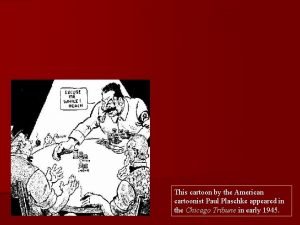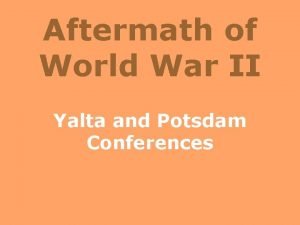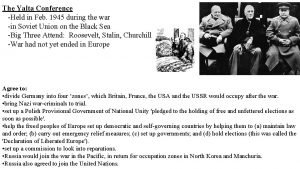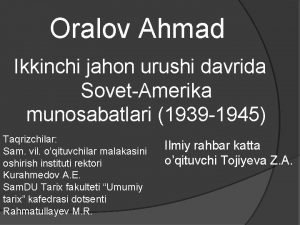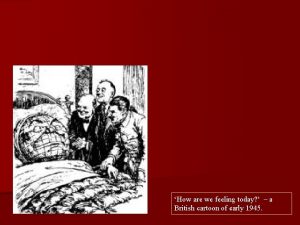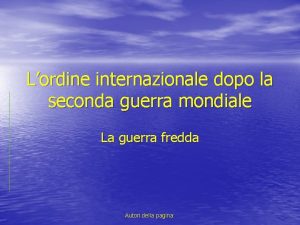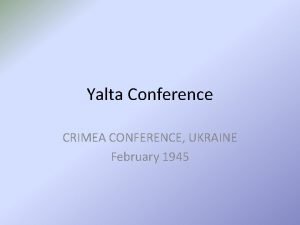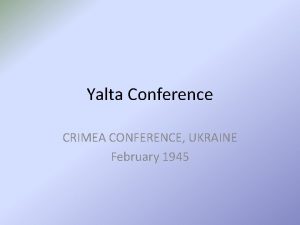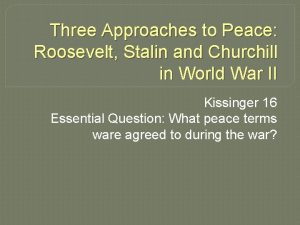Churchill Roosevelt and Stalin in Yalta Ukraine 1945







- Slides: 7

Churchill, Roosevelt, and Stalin in Yalta (Ukraine), 1945

Tehran, 1943: Stalin, Roosevelt, Churchill agreed E. Europe would be liberated by the Soviets Moscow, 1944: Churchill and Stalin agreed that both eastern and western Europe would ensure “friendly governments” were established on their respective sides of Europe Yalta, Feb 1945: Stalin wanted a “buffer zone” between the eastern and western blocks. Roosevelt brought up the issue of self-determination. US pushing to form the United Nations before the “Big Three” (US, UK, USSR) divided up into hostile camps. San Francisco, April 1945: Formation of the UN. Division of Germany and Berlin after Soviet-engineered coup in Romania. Potsdam, July 1945: Truman favored elections in eastern Europe, but by mid-1945, only a western invasion could undo developments in eastern Europe. 1946: The ideological divide came to be known as the “Iron Curtain”. Civil war in Greece Truman Doctrine. 1947: Marshall Plan (1949 COMECON)

NATO (1949) AND THE WARSAW PACT (1955)

Germany after WW 2 – Occupation Zones 1948 The Soviet Union blockades routes in and out of the Allied part of Berlin. Two million West Berliners are stranded with little food or fuel. The Allies undertake the Berlin Airlift, flying planes with food and supplies into West Berlin for 462 straight days. The Soviets lift the blockade in 1949 Western and Eastern Germany form separate governments. 1950 s In West Berlin and West Germany, rebuilding booms. In the East, food and housing are scarce. More than 3 million people leave East Germany for a better life in the West.

The Berlin Wall At 2 a. m. on August 13, 1961, East Germany strings a low, barbed-wire barrier between East and West Berlin. It effectively divides the city in half. Within days, workers cement concrete blocks into a low wall through the city. Among other things, the wall cuts through 192 streets and 32 railway lines.

GERMANY DIVIDED 300 watch towers, 14, 000 guards, and 600 dogs watch over a barren no man's land. A pipe, too large in diameter for a climber's grip, runs along the top of the wall. "Forbidden zones, " miles wide, are created behind the wall. No one is allowed to enter the zones. Anyone trying to escape is shot on sight.

The US and the Soviet Union Economic aid: Marshall Plan, 1947; Comecon, 1949 Military camps: NATO, 1949; Warsaw Pact, 1955 Arms race: Mac. Carthyism in the US, 1950 s; Cuban missile crisis, 1962; SALT talks, 196972 1979: Occupation of Afghanistan 1986: glasnost and perestroika http: //en. wikipedia. org/wiki/Image: Cuban_missiles. jpg 1989: Collapse of the Soviet Union
